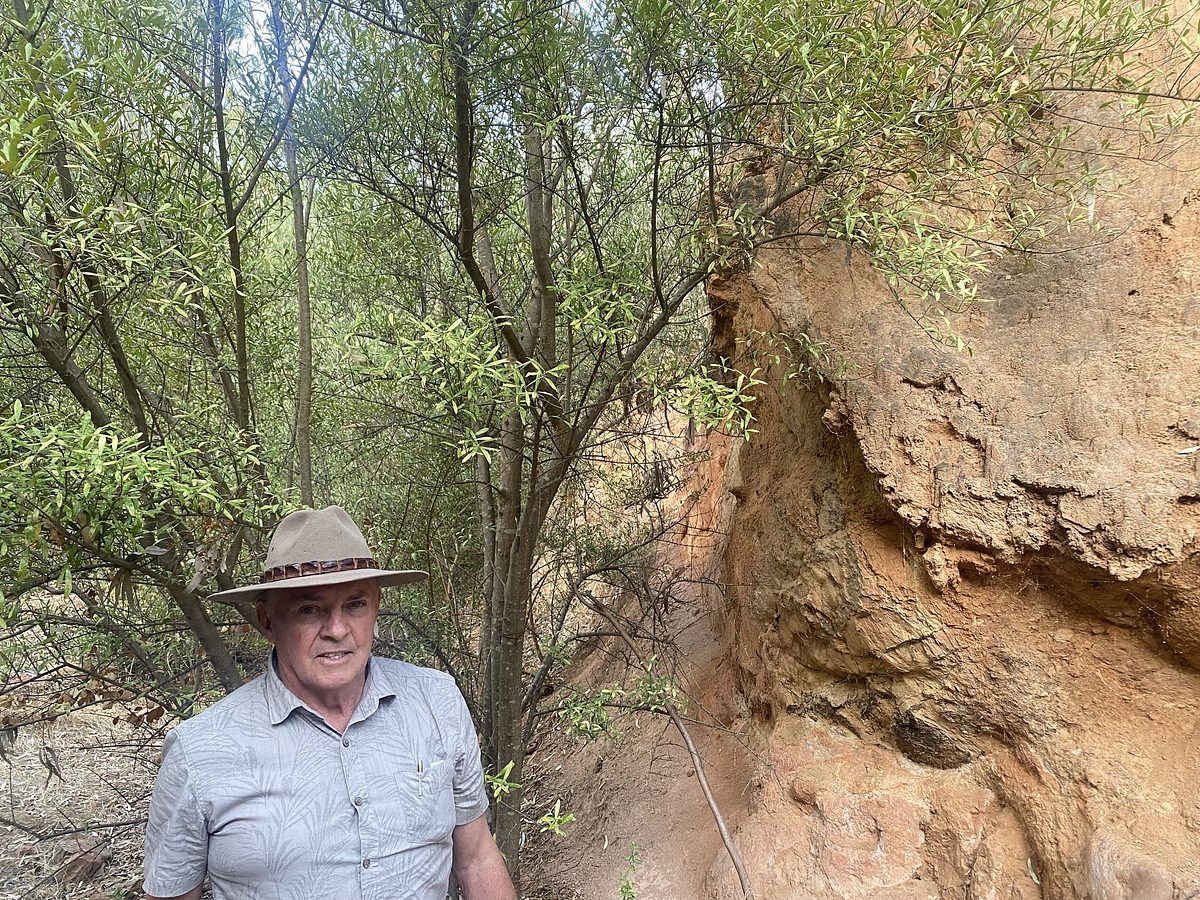Funding to care for our land, water and nature
Interested in how South Australia’s Grassroots Grants Program works? Here’s what you need to know.
Grassroots grants empower communities.
South Australia’s Grassroots Grants Program is run by the state’s 9 landscape boards to empower the community to take action to look after the environment.
The grants support not-for-profit community-based organisations, volunteer groups and individuals to run local projects that help care for the environment.
Grants can be used to kick-start a new project or build on an existing one for activities such as weed treatment, pest management, fencing, erosion management, revegetation and community education activities.
Each landscape board manages its own Grassroots Grants program. Successful projects align with priorities outlined in each board’s regional landscape plans and annual business plans.
How to apply
Now could be the right time to put together a winning application for a landscape project close to your heart.
Check with your local board for application opening and closing dates and guidance about how to apply.
If you’ve missed the application window for your region, you’ve now got plenty of time to finesse your idea and put together a strong application for next year’s program – it’ll be here before you know it.
Great outcomes from grassroots grants
First Nations ochre quarry restored in Melrose

Nukunu Wapma Thura Aboriginal Corporation won nearly $10,000 to rehabilitate the karku (ochre) quarry and riparian corridor along Willochra Creek in Melrose. The on-ground work involves controlling invasive weeds, a planting day to revegetate the area and the removal of rubbish and woody waste. The project also helps to preserve the cultural significance of the karku quarry, which was mined by Aboriginal people for thousands of years and continues to be used for art making practices and ceremony.
Community collaboration sees vital revegetation of City of Holdfast Bay dunes

Six sites between Brighton and Seacliff have been revegetated, thanks to Trees For Life, volunteer group the Holdfast Bay Heroes, students and staff of Seacliff Primary School, and local community groups. A Green Adelaide grassroots grant has helped weed control followed by strategic planting to promote biodiversity in this ‘Reclaim the Dunes’ project.
Sheep nutrition sessions target Eyre Peninsula women

With support from an Eyre Peninsula Landscape Board grassroots grant Women Together Learning (WoTL), an organisation dedicated to inspiring and supporting women in agribusiness around Australia, held two events, at Cummins and Minnipa, for local women in agriculture. Women at the event were able to connect with other women involved in farming while learning to care for livestock and farming soils.
Springing into action with citizen science on the Limestone Coast

Citizen science has been the driver for the Port MacDonnell Landcare Group as they delivered wetland restoration and water sampling activities at the nationally endangered karst spring sites. The Grassroots Grants progam has supported the Springcare: Community caring for karst springs and fens of the lower limestone coast project to enable another year of activities.
Riding for the Disabled revegetation project on Eyre Peninsula

Riding for the Disabled Association (RDA) SA in Port Lincoln received $10,000 for removing pest vegetation and creating new vegetation areas that will control erosion while providing space to control and care for animals.
Funding enabled the removal of noxious plants and trees from the site, the collection and purchase of native grasses to be sown as pasture for horses and helped with propagation of seeds collected from native vegetation on site.
Time-lapse cameras track snail traffic in crops on Yorke Peninsula

Nearly $10,000 in grassroots grants funding helped Applied Invertebrate Ecologist Dr Michael Nash test the assumption that pest snails move from native vegetation to feast on crops. Dr Nash set up 12 time-lapse cameras next to canola crops on southern Yorke Peninsula to monitor snail activity throughout the growing season. While many farmers see crop edges as a source of pests, evidence shows that good quality native vegetation can be a source of biological control.
Hindmarsh Island revegetation success story

A grassroots grant helped Karen and Chris to revegetate their 80-acre property at Hindmarsh Island, by allowing them to propagate rare understory plants to improve biodiversity and habitat.
Over the past 13 years they have planted over 70,000 local provenance tubestock and their property is now a haven for bird and insect populations.
They have also kept records of bird observations over the years and have recorded 68 different species on the property, a huge increase from seeing only 6 regular species when they first arrived.
District-scale weed control in SA Arid Lands

A collective of 12 properties along the Barrier Highway in the North East of SA has used grassroots grants funding for a large scale aerial Noogoora burr control project. Concerned with the risk posed to local biodiversity and production, the group applied for support funding to help control the spread of the weed along creek lines following heavy rains in early 2022. Aerial spraying took place over 4 days in early February 2023 and covered 3560 hectares, with excellent results
Growing success of Kangaroo Island’s Grassroots Grants

The stunning wind-swept northern side of Bay of Shoals is being transformed from a barren wasteland to a native bushland haven for Kangaroo Island’s myriad of bird species.
Bursting from tree guards on the bay sweeping towards Cape Rouge are 600 young native plants that are thriving in the now fenced-off coastal reserve.
Given the relatively harsh conditions and poor soils, the success of the revegetation project has surprised and encouraged the BirdLife KI volunteers who secured a Kangaroo Island Landscape Board grassroots grant to bring the dream to life.
Before this work the shorebird habitat and nesting sites were becoming degraded, and with the new habitat the volunteers are looking forward to seeing species like thornbills, honeyeaters, robins, silvereyes, and wattle birds.
More information:
Find out more about grassroots grants projects across the state:


